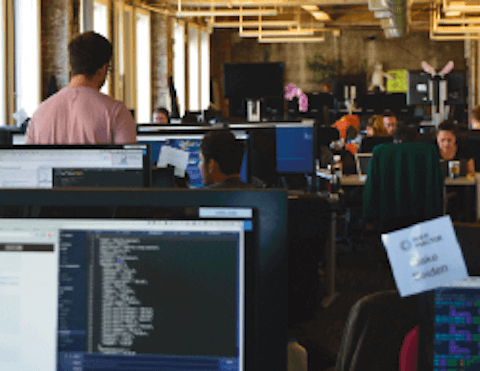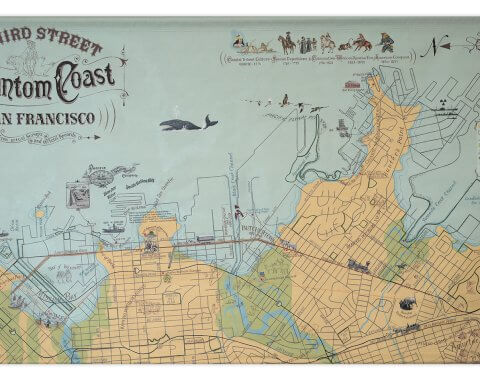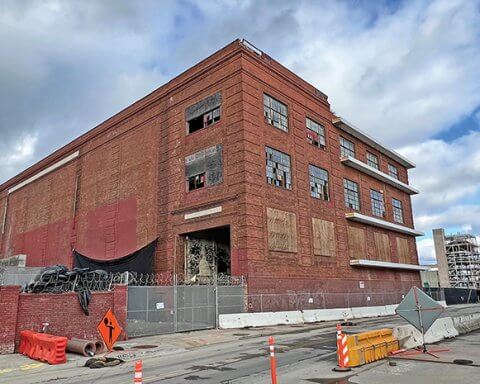Last December, the San Francisco Unified School District notified families that it was preparing a phased reopening of in-person learning, starting on January 25th. Different schools and groups would be invited back to in-person learning in tiers, reflecting specific schools and grades, such as younger and Special Education students, with tier assignments subject to change. SFUSD quickly set this plan aside, replaced by a new one, “Phase 2a,” with a tentative February 8 start date for the first tier. Many residents, bewildered by the District’s inability to bring students back to their campuses, expect that date to pass as well without a return to hands-on learning.
The District has devised a list of requirements that must be met for re-opening to occur. These include accumulating sufficient Personal Protective Equipment (PPE) and cleaning supplies and modifying school interiors and facilities to allow for physical distancing and ease of sanitization. Students and their families need to be informed of proper COVID prevention measures; an outreach effort complicated by shelter-in-place.
Both the United Educators of San Francisco, which represents teachers, and the Service Employees International Union, on behalf of custodial staff, must be informed of and agree with reopening plans. So, too, must families.
“Some of the push back has to do with the fact that we went to purple all of a sudden,” said Darlene Martin, Starr King Elementary School principal. “Things seemed to be going along well, we were preparing to come back, and all of a sudden the counties are in the purple. How did that happen? And I think, for some people, going back into purple did not seem to be the right time for re-opening.”
A reason for a staggered approach to re-opening is that the District expects new complications to emerge after students and teachers return to the classroom.
“There is a lot of learning that goes along with how you’re doing this,” Martin said.
According to Principal Martin, while the first tier of the re-opening schedule is on hold, Starr King is preparing to revive its campus on February 8th. Based on the original plan approved by the San Francisco Board of Education, Starr King would first resume in-person learning for its pre-kindergarten and part of its Special Education program, then bring back kindergartners, followed by a gradual re-introduction of other grades.
Teachers and support staff are also planning for the possibility that the remainder of the school year will be conducted remotely.
“We have no idea when in-person learning at the SFUSD will start,” said J.R. Eppler, whose son is a Daniel Webster Elementary School kindergartener. Families were initially informed that Daniel Webster would re-open after Starr King, but no date has been set.
According to Christina Quiroz, an arts educator who started working at Starr King in 1990 and at Daniel Webster seven years ago, the District is having all schools prepare to re-open, which has added to a workload already burdened by the demands of teaching in the midst of a pandemic. Quiroz volunteers to help coordinate and compile material packets for families.
“The schools really need it right now,” she said.
Her own materials list is extensive. Especially at the beginning of the semester, Quiroz spends hours collecting items, like colored pencils and construction paper, to assemble into art kits for families to pick up along with other supplies at scheduled times at Starr King and Daniel Webster.
“Not every child has access to the same kinds of environmental enrichment in that they have the things they need to do art at home,” she said.
Teachers had to scramble last winter when the order came to stop in-person learning. “We found out that Friday and started reviewing things immediately,” Quiroz said. “Obviously, parents were calling,” wanting to know what to expect for the coming weeks.
By Monday plans were in place for synchronous classroom time, during which teachers and students participate in Zoom classes, as well as asynchronous classroom time, when students work independently on assignments with educators available as needed.
Last summer, teachers sought professional development opportunities to become proficient in programs like Seesaw, an app that allows teachers and students to post assignments, ask questions and interact with each other outside of email or Zoom.
Quiroz noted that some teachers have struggled more than others, but her colleagues have thrown themselves into the effort. Many educators exceed the number of hours they’re required by the District to be available to students online. She spends less time interacting directly with students but has increased her investment in class preparation.
“But that’s how teachers are,” she explained. Teachers go above and beyond for their students in the pandemic because “it’s a calling.”
School volunteers help distribute supplies. The Potrero Hill Recreation Center and Potrero Hill Neighborhood House (Nabe) have created hubs and pods to provide students with greater levels of supervision and socialization opportunities. Starr King works with 826 Valencia, whose helpers offer two classes with extra support, conducted online, for writing assignments.
Hubs are organized by schools in partnership with community organizations. They provide places where students can access technology for remote learning and study and do homework with adult supervision, under strict COVID-safety guidelines. The Hub at the Nabe, for example, is staffed by internal and SFUSD employees, with computers and other supplies provided by the District.
Pods are informal, smaller, organized by families, though sometimes with assistance from nonprofits. “The children in a pod are essentially quarantining together,” Martin said.
The Rec Center operates somewhere between a pod and a Hub. With a more formal set up that has some District oversight, it primarily serves the children of essential workers.
While most school buildings are locked down, some administrators go to their offices to be available for those who may show up with questions or – as frequently happens to Principal Martin – needing help with the Chrome Book or Hot Spot that the District has provided their student.
According to Martin, some Starr King’s students don’t live in the District; the school had to track down addresses to mail students materials. They’ve also provided backpacks and even desks.
Quiroz prepares lists of needed supplies for parents and guardians, as well as guidelines and suggestions for how their children can participate in class and work on art at home without access to materials found in the classroom.
“A really great thing about art is that you really don’t need many things to do it”, she said, though younger students struggle to accept that they can draw just as well with a pencil or notepaper as with crayons and construction paper. “We’ve had to make up a lot of things as we go.”
“The teachers and administration have done as good a job as possible at trying to make this a good school year for the kindergartners,” said Eppler. “They have a lot of challenges, and I understand that they are constantly adjusting as plans for school reopening and other things come down the pipeline. They’ve done a good job of being adaptable and trying to ensure that education continues, regardless of the situation.”
Eppler considers his family lucky because his son participates in online classes at Potrero Kids. Potrero Kids, privately-operated by the Potrero Residents Education Fund, located on the Daniel Webster campus, enables kindergartners to maintain some of the social and environmental aspects of in-person learning. The preschool offers classroom space, a teacher and support staff who facilitate the students’ use of Zoom and other programs as they attend classes taught remotely by Daniel Webster educators. Most of the kids in Eppler’s son’s kindergarten class are physically elsewhere, with a handful with him at Potrero Kids, with an opportunity to establish the long-term friendships that children usually enjoy.
“I can’t tell you how fortunate my wife and I think that we are,” Eppler said, “that we had a group like PREFund in the neighborhood that is operating preschools and that they were able to accommodate some of the preschoolers that were moving into kindergarten by giving them an option for in-person support.”
In addition to helping socialize and ease the transition to eventual in-person learning, the option makes it much easier for parents to follow a typical work schedule at a time when outside childcare options are extremely limited.
“We have been fortunate that his daily schedule, with the exception of a couple of months right at the beginning of the pandemic, has not been disrupted from what it was or what it will be when full-time, in-person learning begins again,” said Eppler.
Not every family, however, is able to take advantage of Hubs and pods. Jessica’s son, Daniel, a kindergartner in Starr King’s Mandarin-immersion program, has yet to set foot inside the school. Neither has Jessica.
“I’m just going to say, I love Starr King, having never been on campus myself, having never met anyone there, face to face,” Jessica said. “The teachers have been phenomenal. They communicate so well with us and they understand that kindergartners can’t be on Zoom all day.”
Jessica and her husband have modified their schedules to take turns watching Daniel. Jessica is in graduate school and has access to daycare services for Daniel’s two-year-old sister. Her in-laws live nearby and watch the children as well. Even so, Jessica has come close to quitting her doctoral program, “We have a huge support system that we’re able to make work really well. And it’s still really tough. I don’t know what I’m going to do when my semester starts.”
For the past year adult caretakers have had to take on many of the roles that teachers perform. “They have homework assignments and it’s hellacious to get through the homework,” said Jessica. “It really is, because I have things to do, so I’m trying to rush him through it, but, poor thing! He’s a kindergartner, he can’t really do it that fast. I’m trying to do my own homework, but he has to do his homework first. It can be very frustrating.”
The story is different for many of the City’s private schools. Red Bridge, a kindergarten through eighth grade school, opened South-of-Market last fall. Director and founder, Orly Friedman, explained that the school decided to begin classes in September in part because they recognized that the pandemic would offer an opportunity to showcase the school’s student-initiated learning model.
“Building student agency really is the most important skill that a school can provide these days,” she said.
The first shelter-in-place order was issued in the middle of Red Bridge’s admissions process, which complicated the school’s opening. “I think I had maybe a day when I thought maybe we should wait a year, but ultimately realized that this school was more useful and important now than ever,” said Friedman. “It’s really what allows students to be adaptable when unpredictable events happen. The students have a sense of agency if they do have to work remotely. We decided to go ahead and open, knowing that we would have to make a lot of back up plans and contingencies.”
Red Bridge, which has just a dozen students, has been able to hold in-person classes. Friedman explained that the small student population and facilities’ size allowed them to secure permission to open from the San Francisco Department of Public Health. The school has attracted East Bay families as a result. Other than learning, everything else is handled remotely, including parent-teacher meetings. Friedman believes that the school has been hampered in its attempt to build a sense of community that’s part of its foundational goals; families haven’t been able to meet one another and parents don’t get to spend time on campus.
Red Bridge expects to double its student body next year and is developing plans to accommodate more pupils and staff.
Friends of Potrero Hill, located in Dogpatch, also continues to offer in-person classes. The preschool initially suspended operations in March but re-opened at the beginning of June. Its director, Monica Leitch, explained that to be able to serve families, Friends has had to modify its programs to accommodate strict COVID guidelines established by the City.
“We have to be in two distinct groups, have fewer children, and there are a lot of cleaning protocols,” said Leitch. Staff and kids are regularly tested for the novel coronavirus.
According to Leitch, Friends, which has served the community since 1996, has been hard hit by the pandemic. To stay open, its had to alter classroom layouts, invest in supplies and equipment and increase the ratio of staff to students, with dire impacts on the nonprofit’s coffers.
“It’s been tough,” Leitch said. “Our board of directors has been very hard working. It’s a little bit of a different job than what they originally signed up for!” The school is currently organizing a fundraiser.
Everyone who spoke with the View expressed concerns about the impact shelter-in-place is having on children’s emotional growth and social development. Jessica sends emails to Daniel’s teacher daily to check on his progress. “I am concerned about him being able to hit the benchmarks,” she said, “but they’re more concerned with the social aspects than the academic aspects. He’s in isolation. He doesn’t have kids to play with.”
Like many caretakers, Jessica has had to take on the role of teacher and playmate. She’s invested in a pair of roller skates to accompany Daniel while he rides his tricycle.
There’s also deep concern about impacts on academic achievement. One eighth grader, who is in the gifted program at his school, nearly failed his courses last semester because he struggled to perform tasks in a timely manner outside a classroom structure. His parents both work in healthcare and can’t be home to supervise him. The family hopes they’ve been able to help their son make the necessary adjustments to do better this semester.
Starr King’s Principal Martin acknowledges that the impact is real and has happened across the board. “We’re not making the gains we would have made in normal years, but students aren’t falling way behind.” “There are some students, who in some ways are doing better. We have some students who can be hyper-vigilant, because maybe they’ve experienced trauma so the classroom can be challenging for them because there’s a lot of movement in the classroom and that makes them very uncomfortable. Where their home is safe, they’re focused on the work because there’s not all this other stuff going on around. That’s a small number of students. There are an even smaller number of students who we still aren’t getting online, but those were the students who weren’t showing up during the year, and that’s despite our best efforts. There’s lots of measures that we’re taking to make sure that people are able to function at home.”
Starr King is distributing “genius kits”, organized with local partners, which include hands-on tools organized to be used at different times as on-line lessons progress.
Students and teachers alike are more familiar with online and computer technologies than they were a year ago because they’ve had to be, skills that’ll continue to serve them in the future.
After the pandemic ends Martin doesn’t think her school will fully return to the way it previously operated. “We can still reconceptualize homework so it’s not, ‘Here’s a sheet. Go do your ABC’s and come back’,” said Martin. “It can be, ‘Here’s a kit. Take out this part of your kit today and struggle with the problem that’s in there. Really think about it and move things around and come back the next day with your understanding.’”
“There’s a lot of good things about our online resources that we understand now. I mean, some of my teachers used Google Classroom before—or Seesaw—but now, they’re all using something. So, they’ve learned. This is a great way to begin. We’re starting [online] student portfolios and having student presentations. So, we’re having to use all of these tools, which we will continue to use to some degree or another, when we are back on site.”
“Like any family, we look forward to going back to what we used to consider normal schooling,” said Eppler. “We’re hopeful that the School District will figure out how to do that in a timely manner.”





